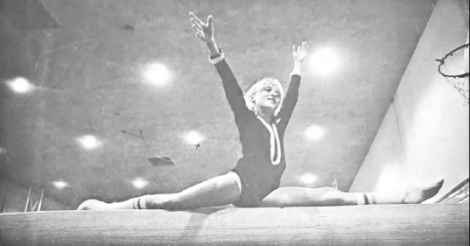Imminent public health threat factor disappears as absolute HUD qualifier
It appears that complaints such as those made by New Ulm Mayor Carl Wyczawski against th allocation of 1975 federal community development funds in Minnesota have done some good.
Certain changes will be made in computing the ranking of each Minnesota city in competition for 1976 funds.
The presence of poverty and substandard housing in a city will still be of prime importance but presence of an imminent threat to public health will not be an automatic trigger into the winner’s circle as it was in the 1975 fund race.
WYCZAWSKI WROTE the Minnesota congressional delegation in Washington last July, blasting the allocation process, after New Ulm lost out in its bid for $175,000 in that program.
He wrote that New Ulm, a strong community with no substantial slums, had not neglected its needs to the extent that it could claim an imminent threat to public health, and thus did not qualify for funds.
Rep. Thomas Hagedorn forwarded the letter to the federal Department of Housing and Urban Development (HUD), agency in charge of the community development program.
Sen. Walter Mondale wrote he “would be making further efforts to correct some of these deficiencies.”
Other outstate Minnesota city officials also complained, some directly to the St. Paul HUD office which had devised the allocation system for Minnesota.
REPERCUSSIONS ROSE as high as David Meeker Jr., assistant secretary of HUD in charge of the community development grant program.
Meeker admitted to a recent convention of city managers that the formula used for awarding grants in Minnesota resulted in virtually none of the outstate growth cities receiving funds.
Meeker expressed concern over this result and said he had visited Minnesota to review the situation. Minnesota was the only state he cited specifically where this was a problem.
Meeker also said some towns entered the race between preliminary and final application stage and forced revised ranking. He said only towns invited to submit final applications would be considered in the 1976 allocations.
A SPOKESMAN from HUD’s St. Paul office denied that there was pressure from higher up to change the allocation system in Minnesota for community development money.
He explained the proposed changes as staff-inspired.
“None of our staff were very well satisfied with the system once we saw what it would do,” he said. “We inadvertently built in a bias which gave small towns too much of an edge.”
The percent of poverty and substandard housing was considered under that system, but not the actual numbers of such items. This meant that small, dying towns with a large per cent of dilapidated housing ranked high in the race for 1975 funds.
One change proposed by the St. Paul HUD staff is to consider both “percent” and “absolute numbers” of poverty and substandard housing.
Also, the points granted for these items will be added to project points, rather than multiplied as in the 1975 process.
The new system “appears to give all communities an equal chance” at the grants, the HUD spokesman said.
There will be $6 million available in 1976 to towns in Minnesota (such as New Ulm) which are eligible for ”discretionary” HUD grants. Amount available this year was $4.4 million.
IN JULY the HUD spokesman had said his office would like to eliminate towns funded in 1975 from the 1976 competition or give them negative points.
He now says this would not be legal and 1975 winners will have an equal chance with all other applicants. He says the 1975 grants were for complete projects, so 1976 applications won’t be for the same projects as already funded in 1975.
HUD staff will be in Mankato Oct. 22 to explain the new rating system to city officials from southern Minnesota.
NEW ULM City Manager Richard Salvati is convinced complaints such as the mayor’s helped bring changes in the allocation process.
“Whether New Ulm gets a grant or not in 1976, the quality of grant distribution will certainly be improved,” Salvati says.
He will recommend to the City Council that New Ulm again go through the application process and try for these funds in 1976. He says he doesn’t know which projects will be put forth for funding; this will depend on what develops at the various hearings.
The city’s proposed projects for 1975 were water main loops, pedestrian arcade, residential and commercial rehabilitation.
New Ulm Daily Journal
Oct 14, 1975

